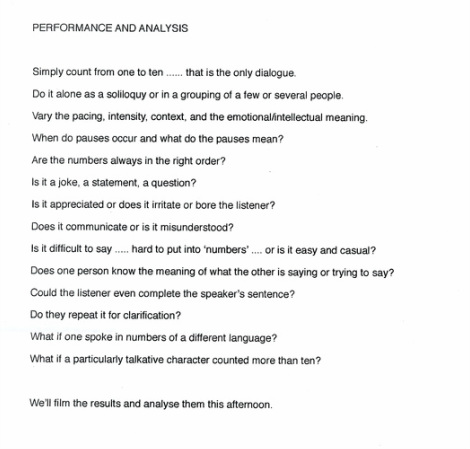Think about performance over the dialogue.
I often concentrate on dialogue for expressing what I want to say. Using the 1-10 dialogue in performance made me think more about body actions and tone of voice.
You don't need dialogue to express what you want to say all the time.
Characters emotions: They are feeling it but they have to get it out. Character has to be sympathetic to the audience watching them go through this emotion.
Story relies on character interactions. Multifaceted story.
Genres can be combined together but be careful not to confuse too many together - it will become muddy.
Surprise the audience; they will thank you for it. BUT don’t break your own rules, if a character has a certain personality they shouldn’t step out of that personality. It should be a ‘logical’ surprise to your story. If the audience already knew the ending to your story they would have no reason to watch it.
A characters influence can affect the story even after they have died.
You have to get characters sorted before you write the story otherwise situations in the narrative may not make sense and the audience will be left confused. You may have a general outline but essentially the character shapes the story. You need to know your character for the story to evolve.
It is a good idea to make a floor plan view – you looking down on the set so you can see and work out what happens in a scene and where.
In order for them to be bad, you should see them as a good person first. There should be a motive, someone receiving of the change.
Input>motivation
Internal dialogues and motivators.
Action enables change.
Characters are multifaceted and complicated.
Make them nice for them to be naughty or mad.
The relationship between the hero and the opponent must be unique and individual but also fulfil a crucial story function. This is the most important relationship in your story.

 RSS Feed
RSS Feed